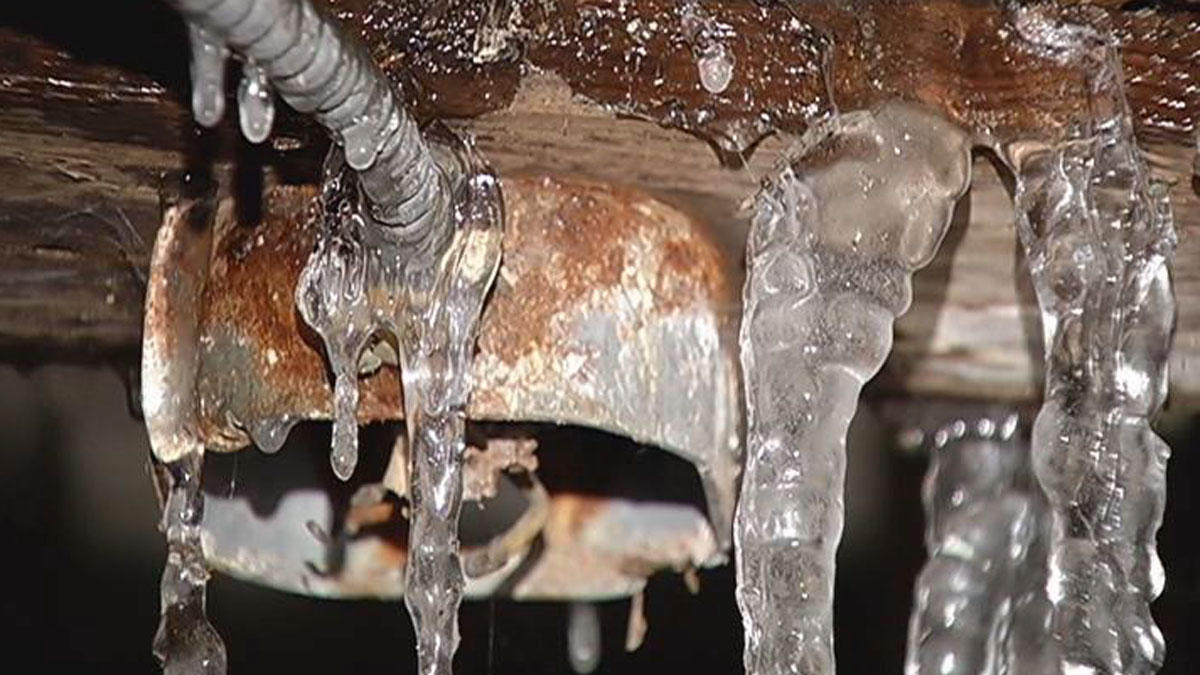This great article down below about Prevent Frozen Pipes is extremely intriguing. Read it yourself and decide what you think of it.

Winter can ruin your pipes, particularly by freezing pipes. Here's how to prevent it from happening and what to do if it does.
Introduction
As temperature levels decline, the threat of icy pipes boosts, potentially leading to costly fixings and water damages. Comprehending exactly how to prevent icy pipes is essential for homeowners in cold climates.
Understanding Icy Pipelines
What causes pipelines to freeze?
Pipes ice up when revealed to temperatures listed below 32 ° F (0 ° C) for prolonged durations. As water inside the pipes ices up, it expands, taxing the pipeline walls and possibly creating them to burst.
Threats and problems
Frozen pipes can bring about water system disturbances, home damages, and pricey repair work. Burst pipes can flood homes and trigger substantial architectural damages.
Indicators of Frozen Piping
Recognizing icy pipelines early can avoid them from rupturing.
Exactly how to determine frozen pipes
Look for lowered water circulation from taps, unusual smells or sounds from pipes, and visible frost on revealed pipelines.
Prevention Tips
Shielding prone pipes
Cover pipes in insulation sleeves or use warm tape to safeguard them from freezing temperature levels. Focus on pipelines in unheated or outside locations of the home.
Heating strategies
Keep indoor areas effectively heated up, specifically locations with pipes. Open up cupboard doors to allow cozy air to flow around pipelines under sinks.
Protecting Outside Pipes
Garden tubes and outdoor taps
Separate and drain pipes garden hose pipes before wintertime. Mount frost-proof faucets or cover outdoor taps with insulated caps.
What to Do If Your Pipes Freeze
Immediate actions to take
If you suspect frozen pipelines, maintain taps open up to relieve stress as the ice thaws. Make use of a hairdryer or towels taken in hot water to thaw pipes gradually.
Long-Term Solutions
Architectural modifications
Consider rerouting pipes far from exterior wall surfaces or unheated locations. Add added insulation to attic rooms, basements, and crawl spaces.
Updating insulation
Purchase top quality insulation for pipelines, attics, and wall surfaces. Appropriate insulation aids preserve regular temperatures and lowers the danger of icy pipes.
Final thought
Preventing frozen pipelines calls for positive procedures and fast reactions. By recognizing the reasons, signs, and safety nets, house owners can protect their plumbing throughout cold weather.
6 Proven Ways to Prevent Frozen Pipes and Protect Your Home
Disconnect and Drain Garden Hoses
Before winter arrives, start by disconnecting your garden hoses and draining any remaining water. Close the shut-off valves that supply outdoor hose bibs and leave the outdoor faucet open to allow any residual water to drain. For extra protection, consider using faucet covers throughout the colder months. It’s also important to drain water from any sprinkler supply lines following the manufacturer’s directions.
Insulate Exposed Pipes
Insulating your pipes is an effective way to prevent freezing. Pipe insulation is readily available at home improvement stores and is relatively inexpensive. Pay close attention to pipes in unheated areas such as the attic, basement, crawl spaces, or garage. Apply foam insulation generously to create a buffer against the cold. You can also wrap your pipes in heat tape or thermostat-controlled heat cables for added warmth.
Seal Air Leaks
Inspect your home for any cracks or openings that could let in cold air. Seal any holes around the piping in interior or exterior walls, as well as the sill plates where your home rests on its foundation. Additionally, make sure to keep your garage door closed unless you’re entering or exiting. Leaving it open creates a significant air leak that can lead to frozen pipes.
Allow Warm Air Circulation
During cold snaps, it’s essential to allow warm air to circulate evenly throughout your home. Leave interior doors ajar to promote better airflow. Open kitchen and bathroom cabinets to help distribute heat consistently around the rooms. If you have small children or pets, be sure to remove any household chemicals or potentially harmful cleaners from open cabinets for safety.
Let Faucets Drip
A small trickle of water can make a big difference in preventing ice formation inside your pipes. When temperatures drop significantly, start a drip of water from all faucets served by exposed pipes. This continuous flow helps prevent the water from freezing. Additionally, running a few faucets slightly can relieve pressure inside the pipes, reducing the chances of a rupture if the water inside does freeze.
https://choateshvac.com/6-proven-ways-to-prevent-frozen-pipes-and-protect-your-home/

I came across that post on Helpful Tips to Prevent Frozen Pipes this Winter while scouting around the search engines. Sharing is caring. Helping people is fun. Kudos for your time. Don't hesitate to check our site back soon.
Click Here
Comments on “Preventing Frozen Plumbing: Effective Strategies for Cold Weather”